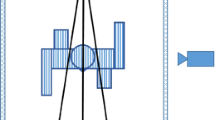Abstract
The state-of-the-art gait recognition algorithms require a gait cycle estimation before the feature extraction and are classified as periodic algorithms. Their effectiveness substantially decreases due to errors in detecting gait cycles, which are likely to occur in data acquired in non-controlled conditions. Hence, the main contributions of this paper are: (1) propose an aperiodic gait recognition strategy, where features are extracted without the concept of gait cycle, in case of multi-view scenario; (2) propose the fusion of the different feature subspaces of aperiodic feature representations at score level in cross-view scenarios. The experiments were performed with widely known CASIA Gait database B, which enabled us to draw the following major conclusions, (1) for multi-view scenarios, features extracted from gait sequences of varying length have as much discriminating power as traditional periodic features; (2) for cross-view scenarios, we observed an average improvement of 22 % over the error rates of state-of-the-art algorithms, due to the proposed fusion scheme.












Similar content being viewed by others
References
Bashir K, Xiang T, Gong S (2010) Cross-view gait recognition using correlation strength. In: Proceedings of the British Machine Vision Conference, pp 109.1–109.11. BMVA Press. doi:10.5244/C.24.109
BenAbdelkader C, Cutler R, Davis L (2002) Stride and cadence as a biometric in automatic person identification and verification. In: Proceedings of Fifth IEEE International Conference on Automatic Face and Gesture Recognition, 2002, pp 372–377. doi:10.1109/AFGR.2002.1004182
Bouchrika I, Goffredo M, Carter J, Nixon M (2009) Covariate analysis for view-point independent gait recognition. In: Tistarelli M, Nixon M (eds) Advances in Biometrics, Lecture Notes in Computer Science, vol 5558, pp 990–999. Springer, Berlin Heidelberg. doi:10.1007/978-3-642-01793-3_100
Boulgouris N, Chi Z (2007) Gait recognition using radon transform and linear discriminant analysis. IEEE Trans Image Process 16(3):731–740. doi:10.1109/TIP.2007.891157
Collins R, Gross R, Shi J (2002) Silhouette-based human identification from body shape and gait. In: Proceedings of Fifth IEEE International Conference on Automatic Face and Gesture Recognition, 2002, pp 366–371. doi:10.1109/AFGR.2002.1004181
Guan Y, Li CT, Hu Y (2012) An adaptive system for gait recognition in multi-view environments. In: Proceedings of the on Multimedia and security, MM&Sec ’12, pp 139–144
Han J, Bhanu B (2006) Individual recognition using gait energy image. IEEE Trans Pattern Anal Mach Intell 28(2):316–322. doi:10.1109/TPAMI.2006.38
Han J, Bhanu B, Roy-Chowdhury A (2005) A study on view-insensitive gait recognition. In: IEEE International Conference on Image Processing, 2005. ICIP 2005, vol 3, pp III-297-300. doi:10.1109/ICIP.2005.1530387
Hu M, Wang Y, Zhang Z, Zhang Z (2011) Multi-view multi-stance gait identification. In: 2011 18th IEEE International Conference on Image Processing (ICIP), pp 541–544. doi:10.1109/ICIP.2011.6116402
Iosifidis A, Tefas A, Pitas I (2012) Activity-based person identification using fuzzy representation and discriminant learning. IEEE Trans Inf Forensics Secur 7(2):530–542. doi:10.1109/TIFS.2011.2175921
Kale A, Chowdhury A, Chellappa R (2003) Towards a view invariant gait recognition algorithm. In: Proceedings of IEEE Conference on Advanced Video and Signal Based Surveillance, 2003, pp 143–150. doi:10.1109/AVSS.2003.1217914
Kusakunniran W, Wu Q, Li H, Zhang J (2009) Multiple views gait recognition using view transformation model based on optimized gait energy image. In: 2009 IEEE 12th International Conference on Computer Vision Workshops (ICCV Workshops), pp 1058–1064. doi:10.1109/ICCVW.2009.5457587
Kusakunniran W, Wu Q, Zhang J, Li H (2010) Support vector regression for multi-view gait recognition based on local motion feature selection. In: 2010 IEEE Conference on Computer Vision and Pattern Recognition (CVPR), pp 974–981. doi:10.1109/CVPR.2010.5540113
Kusakunniran W, Wu Q, Zhang J, Li H (2012) Cross-view and multi-view gait recognitions based on view transformation model using multi-layer perceptron. Pattern Recognition Letters 33(7), 882–889. doi:10.1016/j.patrec.2011.04.014. http://www.sciencedirect.com/science/article/pii/S0167865511001267. Special Issue on Awards from ICPR
Kusakunniran W, Wu Q, Zhang J, Li H (2012) Gait recognition under various viewing angles based on correlated motion regression. IEEE Trans Circuits Syst Video Technol 22(6):966–980
Liu N, Lu J, Yang G, Tan YP (2013) Robust gait recognition via discriminative set matching. J Vis Commun Image Represent 24(4), 439–447. doi:10.1016/j.jvcir.2013.02.002. http://www.sciencedirect.com/science/article/pii/S1047320313000229
Liu N, Tan YP (2010) View invariant gait recognition. In: 2010 IEEE International Conference on Acoustics Speech and Signal Processing (ICASSP), pp 1410–1413. doi:10.1109/ICASSP.2010.5495466
Makihara Y, Sagawa R, Mukaigawa Y, Echigo T, Yagi Y (2006) Gait recognition using a view transformation model in the frequency domain. In: Leonardis A, Bischof H, Pinz A (eds) Computer Vision ECCV 2006, Lecture Notes in Computer Science, vol 3953, pp 151–163. Springer, Berlin Heidelberg. doi:10.1007/11744078_12
Savvides M, Ricanek K Jr, Woodard DL, Dozier G (2010) Unconstrained biometric identification: Emerging technologies. Computer 43, 56–62. doi:10.1109/MC.2010.55
Wang L, Tan T, Ning H, Hu W (2003) Silhouette analysis-based gait recognition for human identification. IEEE Trans Pattern Anal Mach Intell 25(12):1505–1518. doi:10.1109/TPAMI.2003.1251144
Zheng S, Zhang J, Huang K, He R, Tan T (2011) Robust view transformation model for gait recognition. In: 2011 18th IEEE International Conference on Image Processing (ICIP), pp 2073–2076. doi:10.1109/ICIP.2011.6115889
Acknowledgments
This work was supported by FCT project UID/EEA/50008/2013.
Author information
Authors and Affiliations
Corresponding author
Rights and permissions
About this article
Cite this article
Padole, C., Proença, H. An aperiodic feature representation for gait recognition in cross-view scenarios for unconstrained biometrics. Pattern Anal Applic 20, 73–86 (2017). https://doi.org/10.1007/s10044-015-0468-0
Received:
Accepted:
Published:
Issue Date:
DOI: https://doi.org/10.1007/s10044-015-0468-0




